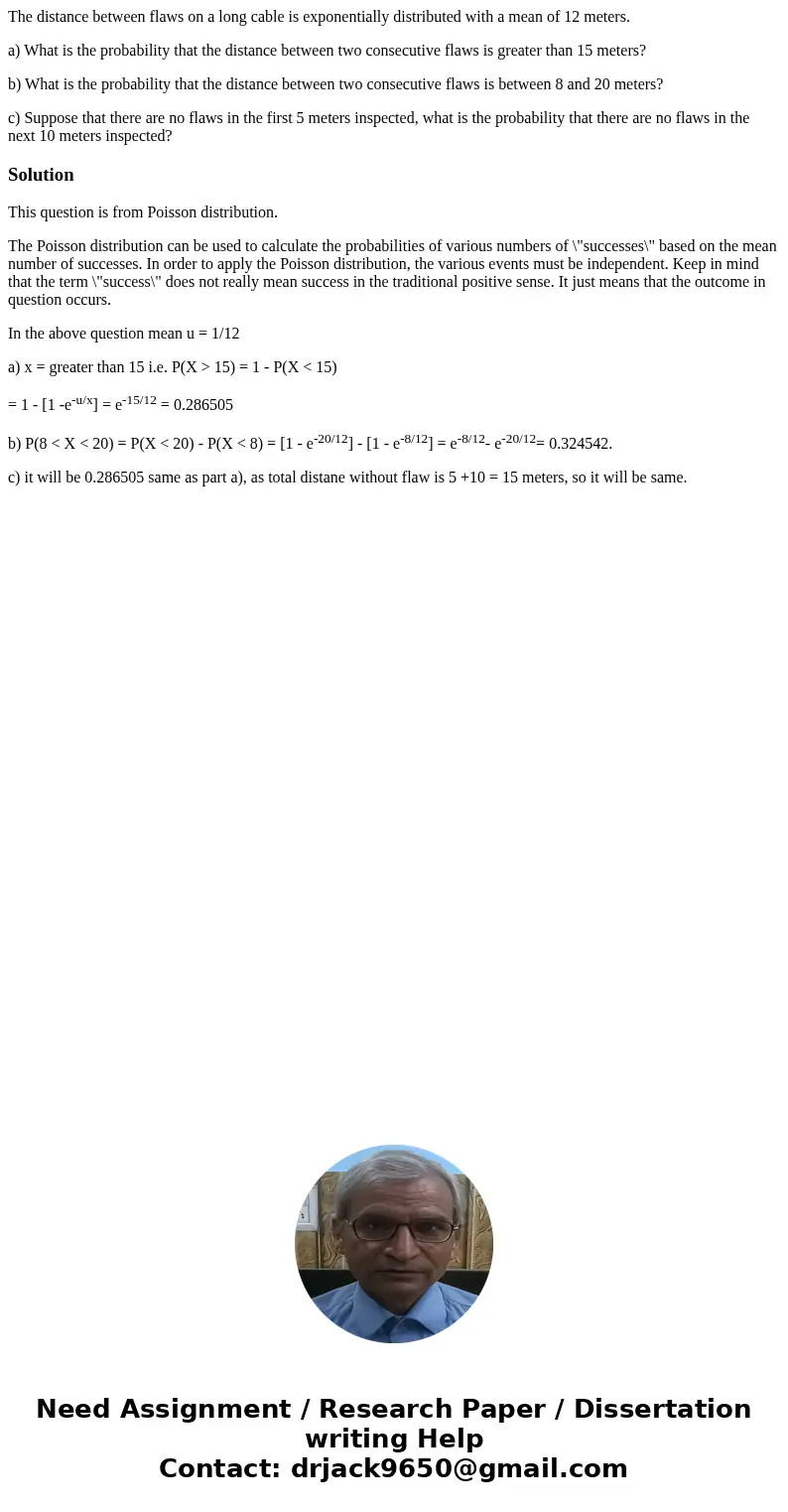The distance between flaws on a long cable is exponentially
The distance between flaws on a long cable is exponentially distributed with a mean of 12 meters.
a) What is the probability that the distance between two consecutive flaws is greater than 15 meters?
b) What is the probability that the distance between two consecutive flaws is between 8 and 20 meters?
c) Suppose that there are no flaws in the first 5 meters inspected, what is the probability that there are no flaws in the next 10 meters inspected?
Solution
This question is from Poisson distribution.
The Poisson distribution can be used to calculate the probabilities of various numbers of \"successes\" based on the mean number of successes. In order to apply the Poisson distribution, the various events must be independent. Keep in mind that the term \"success\" does not really mean success in the traditional positive sense. It just means that the outcome in question occurs.
In the above question mean u = 1/12
a) x = greater than 15 i.e. P(X > 15) = 1 - P(X < 15)
= 1 - [1 -e-u/x] = e-15/12 = 0.286505
b) P(8 < X < 20) = P(X < 20) - P(X < 8) = [1 - e-20/12] - [1 - e-8/12] = e-8/12- e-20/12= 0.324542.
c) it will be 0.286505 same as part a), as total distane without flaw is 5 +10 = 15 meters, so it will be same.

 Homework Sourse
Homework Sourse